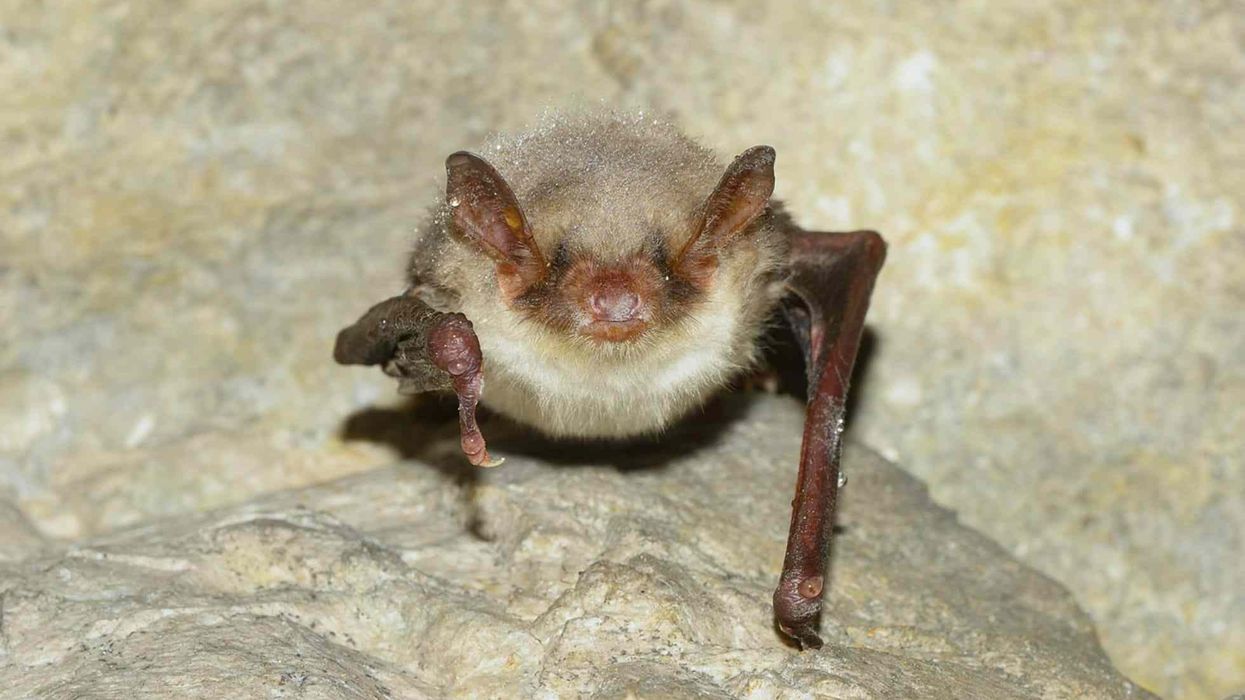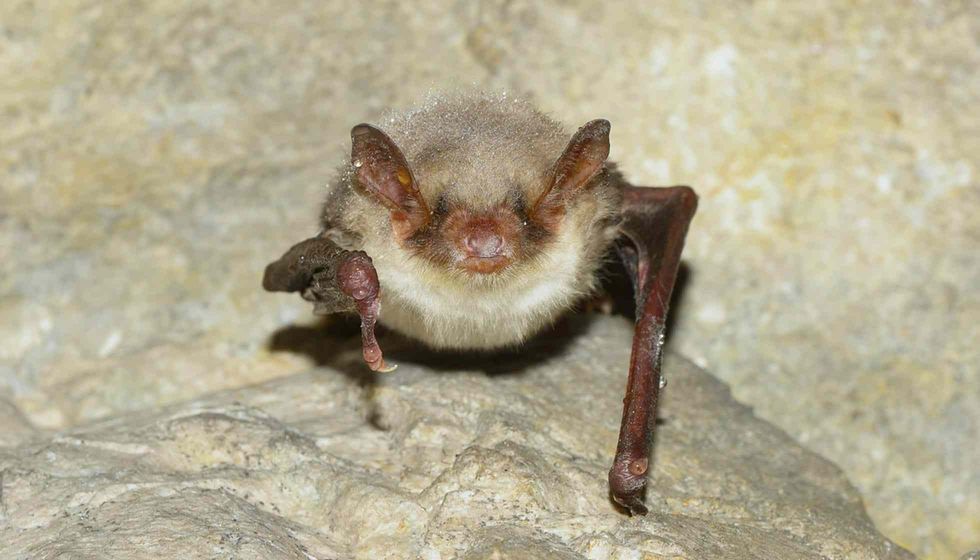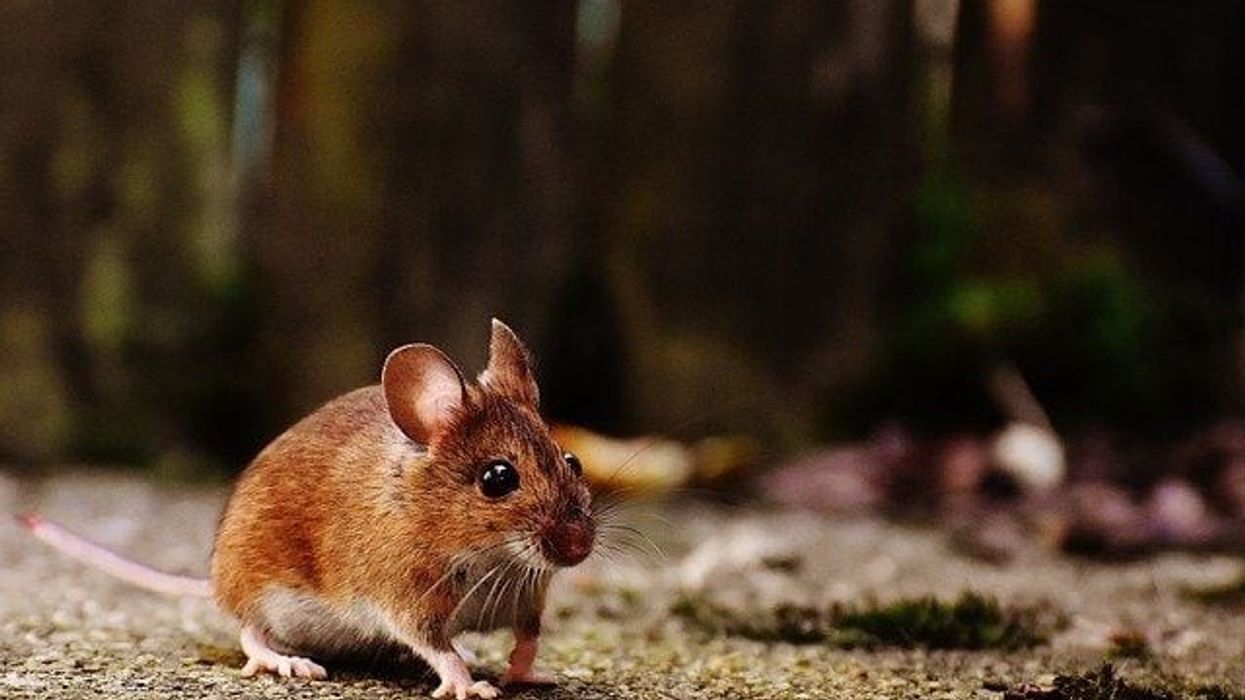The first sighting of the greater mouse-eared bat, or the myotis myotis, took place in the UK in 1958. In 1990, the species was officially declared extinct.
Surprisingly, in 2002, a juvenile male was discovered in Sussex. It had been present there the whole time, however, their populations have declined from then on. The major reason for this was a loss of habitat and change in climate conditions, among others.
Greater mouse-eared bats inhabit caves in the summer months, but in winters they hibernate. Usually, they hibernate in caves or cellars with a temperature of between 7 and 12 degrees centigrade.
Their flight is slow but strong and they have sensory organs to detect the slightest of sounds. Bats have been known to play important roles in ecology, as both predators and prey, as well as this, they are also considered important for seed dispersal and pollination.
In this article, we will take a look at some fun and interesting facts about the mouse-eared bat. If you liked this article then check out the hoary bat and the numbat.
Greater Mouse Eared Bat Interesting Facts
What type of animal is a Greater Mouse Eared Bat?
The mouse-eared bat, or myotis myotis, is a species of bat belonging to the Animalia kingdom.
What class of animal does a Greater Mouse Eared Bat belong to?
The bat species belong to the class Mammalia, Vespertilionidae family, and genus myotis.
How many Greater Mouse Eared Bats are there in the world?
There is a total of 1400 bat species in the world. The greater mouse-eared bat is the largest British species that exists. The exact population of this species is not definitely determined, however, their populations are experiencing a decline.
Where does a Greater Mouse Eared Bat live?
In the summer months, they inhabit caves and in the northern regions, they reside in warm attics, towers, and cellars. The caves are usually in forests or near the woods. They are also seen in and around trees which have fruits for them to feed on.
What is a Greater Mouse Eared Bat's habitat?
Greater mouse-eared bat habitat consists of caves, warm attics, towers, and cellars in European countries mostly. They don't exist in regions like Denmark, Finland, and the Scandinavian peninsula. A fun fact, did you know that not all bats hibernate, some just migrate in search of food and warmer areas if they feel cold.
Who do Greater Mouse Eared Bats live with?
Myotis myotis bats are social animals. Bats live on their own in caves as well as with others of their own kind in colonies.
They prefer caves or attics, but sometimes also roost in buildings where the temperature is not as stable. Of the 16 species left in Britain, six are endangered or rare. Young bats live with their mother until they are ready to live by themselves.
How long does a Greater Mouse Eared Bat live?
The average lifespan of the greater mouse-eared bat is three to four years. There have been records of them having lived for up to 14 years. The Brandt's myotis is the oldest bat and has lived 41 years in the wild. The Brandt's myotis species living for such a long duration is a true wonder in itself.
How do they reproduce?
Males myotis myotis mate with multiple females in autumn. Females myotis myotis store the sperm in their uterus until spring. The females then form maternity colonies in attics in March and each has a single pup from June onwards. The gestation period lasts 60-70 days.
After giving birth to the young ones they remain fixed onto their mothers for two weeks, since they are blind at birth. Females mate again once their young become independent. It's essential for the young ones to accumulate sufficient fat reserves for hibernation.
What is their conservation status?
Myotis myotis was considered Endangered at one point but is now considered of Least Concern by the International Union For Conservation Of Nature (IUCN).
Greater Mouse Eared Bat Fun Facts
What do Greater Mouse Eared Bats look like?

The greater mouse-eared bats are large in body size and have large wings. The large wings are usually grey in color.
The body length is up to 4 inches (8cm). Its body color is sandy and the bat has a bare pink face with large ears that have a prominent tragus. Their eye color is usually dark and despite the adage blind as a bat, these bats have extremely good vision.
Some can even see UV lights and fly mainly at night. They usually hibernate in caves or cellars with a temperature of between seven and 12 celsius.
How cute are they?
Baby greater mouse-eared bats are cute and small in size however adults are not necessarily cute. They can often be confused with species of birds, however, they belong to a different family and the only common factor is that they can fly.
How do they communicate?
Bats fly mainly at night and produce a stream of high-pitched calls. They primarily communicate through vocalizations known as echolocation calls. This is despite the fact that their main function is not communication. Greater mouse-eared bats echolocate using frequencies between 22 and 86KHz with most energy at 37KHz.
How big is a Greater Mouse Eared Bat?
The greater mouse-eared bat is around 3.14 inches (6.5cm-8cm) long, which is 20 times bigger than the smallest bat species, Kitti's hog-nosed bat.
How fast can a Greater Mouse Eared Bat move?
The greater mouse-eared bat moves at a speed of around 18mph between winter and summer roosts. The bat emerges from its day roost to forage after the sun's disk has passed below.
How much does a Greater Mouse Eared Bat weigh?
Mouse-eared bats weigh roughly 0.0638lbs (20g-45g). The largest and heaviest bat in the world is the giant golden-crowned flying fox.
What are their male and female names of the species?
Male and female bats are not addressed differently and are differentiated based on their reproductive functions.
What would you call a baby Greater Mouse Eared Bat?
The baby greater mouse-eared bat is referred to as a pup when born and is blind at birth. The young become independent after two months and then start to feed on insects.
What do they eat?
The greater mouse-eared bat's diet consists of large ground running anthropods as well as other insect species. They can eat insects in proportions equal to their weight or more. Given that they feed on so many insects they have an exoskeleton made of shiny chitin.
Apart from this it also feeds on fruit from trees. Fruit once infected by bats is not fit for human consumption and can often lead to life-threatening diseases.
Bats ingest large amounts of food when foraging. Certain species of bats, such as vampire bats, specifically feed on the blood of the meat they consume. Their rich diet also causes their poop to sparkle!
Are they dangerous?
Yes, bats have the capability of transmitting diseases hence it's safer to not touch or be near them. If you do encounter a bat it's best to observe them from a distance. Bats do not intentionally harm humans.
There is limited data on symptoms associated with bat diseases. However, this does not eliminate the notion that bat species are capable of transmitting diseases. Having one bat in or near the house is perfectly normal, however, having multiple bats is a sign of infestation and needs treatment.
Would they make a good pet?
They are innately wild animals and prefer living in their natural habitat as compared to living as a pet. They are not as accommodating as other species of pet animals and are large in size, so adopting these species is not ideal.
Did you know...
An older English name for bat species was flittermouse. This matched their names in German and Swedish languages. The name was given or associated with the action of bats being animals who flutter their wings.
The largest bat ever recorded is the golden-crowned flying fox which is a fruit-eating megabat found only in the Philippines. Its weight is 2.6lbs and its wingspan is 5-6ft.
Bats have been subjects to various scientific experimental efforts. 80% of medicine comes from plants that rely on bats for their survival. Studies are conducted on bats since they are considered as carriers of disease.
For the recent covid pandemic, bats were considered specimens for experimental efforts. Bats with white-nose syndrome suggests a natural manifestation of immune reconstitution. More than 6.5 milion bats have died from white-nose syndrome.
Why is the Greater Mouse Eared Bat endangered?
The great mouse-eared bats were declared Endangered or Extinct in the year 1990. In 2002 a young male mouse-eared bat was discovered in Sussex.
Abstract bats, some species of rodents, and some birds are able to save energy during the summer period. After this, there were policies implemented to protect them. At present they have been considered as of Least Concern by the IUCN.
Different types of Bat
Bats species are extremely important for the survival of the ecosystem. Without bats bananas, avocados and mangos would not exist since bats are responsible for the polination of these fruit seeds. They are also the only flying mammal species.
Bats are of two types one live in colonies and the other live in isolation. Certain species of bats are known to eat mice.
This happens when they are bigger in size. The U.S. and Canada alone have 45 species of bats and additional species are found in areas nearby. Each species of bats is native to different regions of the world and has its own unique features, despite the fact that they belong to the same family.
Here at Kidadl, we have carefully created lots of interesting family-friendly animal facts for everyone to discover! Learn more about some other mammals including the vampire bat and the red bat.
You can even occupy yourself at home by drawing one of our cute bat coloring pages.









